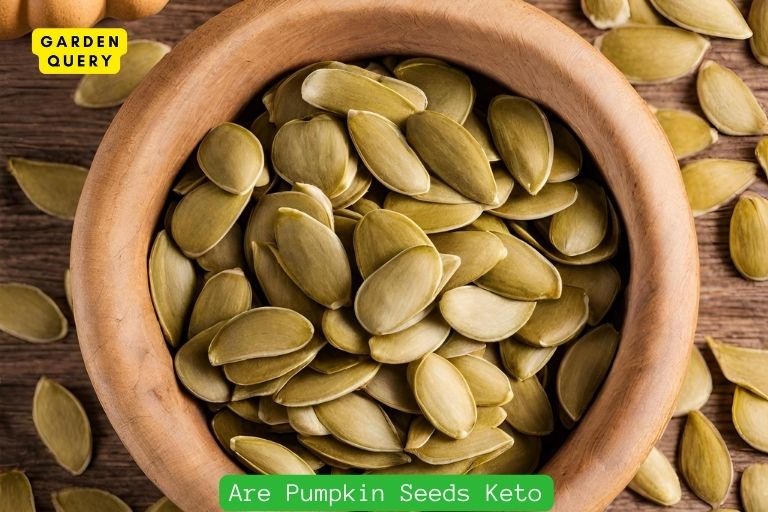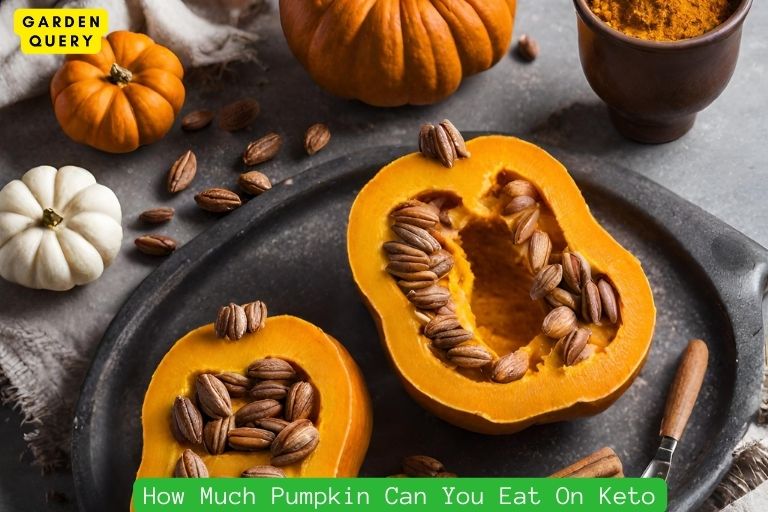How Do Pumpkins Get So Big?
Oversized pumpkins owe their impressive size to a combination of specific pumpkin varieties, optimal growing conditions, meticulous care, and the magic touch of competitive pumpkin growers.
- Variety Selection: Certain pumpkin varieties are bred specifically for size, often referred to as giant or Atlantic pumpkins. These varieties have genetic traits that predispose them to produce larger fruits. Pumpkin growers seeking colossal pumpkins typically choose seeds from these specialized varieties to maximize their chances of growing giants.
- Rich Soil and Nutrients: Pumpkins thrive in nutrient-rich soil, and the secret to their impressive size lies in the soil’s fertility. Growers meticulously prepare the soil, ensuring it is well-drained and enriched with organic matter. Adequate levels of essential nutrients, including nitrogen, phosphorus, and potassium, play a vital role in supporting the pumpkin’s growth.
- Watering and Sunlight: Consistent watering is crucial for promoting pumpkin growth. These thirsty giants require ample water, especially during their peak growth periods. Additionally, sunlight is a key factor. Pumpkins need full sun exposure to fuel the photosynthesis process, enabling them to convert sunlight into energy for growth.
- Pollination Techniques: Successful pollination is essential for the development of a large pumpkin. Growers often employ hand pollination techniques to ensure that each female flower receives quality pollen. This meticulous approach enhances the chances of fertilization and encourages the formation of larger pumpkins.
- Pruning and Careful Attention: To channel the plant’s energy towards one or two pumpkins, growers may prune excess fruits. This directs the plant’s resources to the chosen pumpkins, allowing them to reach colossal sizes. Additionally, vigilant care, including pest control and disease prevention, contributes to the overall health and growth of the pumpkins.
Key Takeaway
Pumpkins Get So Big
The fascination of pumpkins and their impressive size
It’s that time of year again when pumpkins seem to be everywhere, from decorations to tasty pies. But have you ever wondered how these vibrant orange vegetables grow to such impressive sizes? Let’s explore the fascinating journey of pumpkins and the factors that contribute to their growth.

The factors that contribute to their growth
- Genetics: The size potential of a pumpkin is determined by its genetic makeup. Farmers selectively breed pumpkins with desirable characteristics, including size, to cultivate larger varieties. This means that each generation of pumpkins has the potential to be bigger than the previous.
- Nutrition: Pumpkins need plenty of nutrients, especially nitrogen, to grow big. Fertilizers and compost are added to the soil to provide the essential nutrients required for the plants’ growth. Regular watering is also essential to ensure the plants receive enough hydration.
- Sunlight: Pumpkins are sun-loving plants and require at least six to eight hours of direct sunlight per day. Sunlight helps pumpkins generate energy through photosynthesis, fueling their growth.
- Space: Pumpkins are known for their sprawling vines, which can take up a lot of space. Giving each plant enough room to spread out allows them to receive ample nutrients and access to sunlight, leading to bigger fruit.
- Pollination: Pumpkins require pollination to produce fruit. Bees and other pollinators play a crucial role in this process by transferring pollen from the male flowers to the female flowers. Proper pollination ensures healthy fruit development and the potential for larger pumpkins.
By providing the right conditions, including genetics, nutrition, sunlight, space, and proper pollination, farmers and gardeners can cultivate pumpkins that grow to impressive sizes. So, the next time you marvel at a giant pumpkin, remember the careful cultivation and nurturing it took to achieve such a magnificent size.
Pumpkin Varieties
Have you ever wondered how pumpkins can grow to such massive sizes? It’s quite fascinating to see pumpkins that weigh several hundred pounds and can reach sizes that seem almost unreal. But it’s not magic, it’s the result of careful cultivation and specific pumpkin varieties that are known for their large sizes.
Different types of pumpkins known for their large sizes
- Atlantic Giant: This variety of pumpkin holds the record for the largest pumpkin ever grown. With proper care and ideal growing conditions, they can reach incredible sizes that surpass 1,000 pounds.
- Lumina: Lumina pumpkins are known for their smooth, white skin. While not as large as the Atlantic Giant, they can still grow to impressive sizes, typically weighing between 20-40 pounds.
- Prizewinner: Prizewinner pumpkins are recognized for their uniform shape and deep orange color. They can grow to sizes ranging from 100-300 pounds and are often used for competitions.
Characteristics and unique features of each variety
- Atlantic Giant pumpkins have a pale orange color, thick stems, and vigorous vines. They require a longer growing season and plenty of space to accommodate their massive size.
- Lumina pumpkins have a unique white color and are often used for decorative purposes. They have a dense flesh and sweet flavor, making them great for cooking as well.
- Prizewinner pumpkins have a deep orange color, with smooth and ribbed skin. They have a sweet and tender flesh, perfect for making pies and other delicious treats.
Growing giant pumpkins requires special care, including proper soil preparation, regular watering, and regular fertilization. Strategic pruning and support structures may also be necessary to ensure the pumpkins grow evenly and can be supported comfortably.
While not every pumpkin will reach record-breaking sizes, experimenting with different pumpkin varieties and techniques can lead to some pleasantly surprising results.
Growing Conditions
Have you ever wondered how pumpkins can grow so large? Well, it all comes down to the right growing conditions. Pumpkins thrive in specific environments that provide them with optimal soil, sunlight, water, and temperature.
Optimal soil requirements for pumpkin growth
For a pumpkin to reach its maximum size, it requires fertile and well-draining soil. Pumpkins prefer soil with a pH level between 6.0 and 6.8. This slightly acidic to neutral pH allows for the proper absorption of nutrients. Additionally, incorporating organic matter like compost or aged manure into the soil improves its structure, fertility, and moisture retention. The presence of essential nutrients, such as nitrogen, phosphorus, and potassium, is vital for healthy pumpkin growth.
The importance of sunlight, water, and temperature
Sunlight plays a crucial role in the development of pumpkins. They are sun-loving plants that require a minimum of 6 to 8 hours of direct sunlight per day. The energy from the sun helps the plants convert nutrients and sugars into growth. Therefore, it is essential to choose a sunny location for planting your pumpkin seeds.
Water is another essential component for pumpkins to thrive. Adequate watering is crucial during the growing season, especially during hot and dry periods. As a general guideline, pumpkins need around 1 inch of water per week. However, it’s important not to overwater them, as this can lead to root rot.
Temperature also plays a significant role in pumpkin growth. Pumpkins prefer temperatures between 70-85°F (21-29°C) during the day and around 50-55°F (10-13°C) at night. These temperature ranges provide optimal conditions for growth and allow the pumpkins to develop large and healthy.
By providing the right growing conditions, including optimal soil, sunlight, water, and temperature, you can help pumpkins grow to their impressive sizes. Happy gardening
Cultivation Techniques
Preparing the soil for planting pumpkin seeds
To grow big and healthy pumpkins, it’s crucial to start with the right soil preparation. Follow these steps to create optimal growing conditions for your pumpkin seeds:
- Choose the right location: Select an area that receives at least six hours of direct sunlight daily. Pumpkins thrive in warm weather, so ensure that the spot is well-drained and sheltered from strong winds.
- Clear the area: Remove any grass, weeds, rocks, or debris from the planting site.
- Improve soil fertility: Pumpkins require nutrient-rich soil. Add organic matter, such as compost or well-rotted manure, to improve soil fertility and drainage. Work the organic matter into the soil to a depth of about 12 inches.
- Test the soil pH: Pumpkins prefer a slightly acidic to neutral soil pH level of 6.0 to 7.0. Use a soil test kit to determine the pH level of your soil and make necessary adjustments.
Proper planting and spacing guidelines
Once the soil is ready, it’s time to plant your pumpkin seeds. Follow these guidelines for successful planting and spacing:
- Sow the seeds: Plant pumpkin seeds about 1 inch deep into the prepared soil. Space the seeds about 3 to 5 feet apart in rows that are 6 to 8 feet apart.
- Water thoroughly: After planting, water the seeds well to ensure proper germination. Keep the soil moist but not waterlogged throughout the growing season.
- Provide support if necessary: If growing large varieties of pumpkins, consider providing support for the vines, such as trellises or cages, to prevent them from sprawling on the ground.
By following these cultivation techniques, you can give your pumpkin plants the best chance to grow big and produce impressive pumpkins for fall harvest. Remember to monitor the plants for pests and diseases, and provide adequate water and fertilizer as needed.
Nutrient Management
Essential nutrients for promoting pumpkin growth
Ever wondered how pumpkins grow to such impressive sizes? It all comes down to proper nutrient management. Pumpkins require specific nutrients to thrive and produce those massive orange globes we all love.
The essential nutrients required for pumpkin growth include nitrogen, phosphorus, and potassium. Nitrogen is crucial for leaf development, while phosphorus supports flower and fruit formation. Potassium helps with overall plant vigor and disease resistance.
To ensure your pumpkin plants receive these essential nutrients, consider a soil test to determine the nutrient levels in your garden. Based on the results, you can customize your fertilizer application to meet the specific needs of your plants.
Fertilizer recommendations and application methods
When it comes to fertilizing pumpkins, it’s important to choose the right fertilizer and apply it correctly. Here are some recommendations and application methods to help you achieve successful pumpkin growth:
- Fertilizer selection: Look for fertilizers with a balanced NPK ratio specifically formulated for vegetables or flowering plants. This will provide the necessary nutrients in the right proportions.
- Application timing: Start fertilization before planting by incorporating a slow-release fertilizer into the soil. Once the plants have established, follow up with regular applications during the growing season.
- Application method: Apply the fertilizer evenly around the base of the plants, about 6-8 inches away from the stem. Be careful not to let the fertilizer come into direct contact with the plant as it may cause root burn.
- Watering: After fertilizing, make sure to water your pumpkin plants thoroughly to help distribute the nutrients evenly throughout the soil.
By managing the nutrient levels and applying the right fertilizer, you can provide your pumpkins with the necessary fuel for robust growth. So, go ahead and give your pumpkins the TLC they need, and watch them grow into eye-catching giants!
Pest and Disease Control
Have you ever wondered how pumpkins manage to grow so big? Well, aside from the right growing conditions and care, keeping pests and diseases at bay is crucial. Let’s delve into the world of pumpkin pest and disease control to unravel the mystery.
Common pests and diseases affecting pumpkin plants
- Squash bugs: These pests suck the sap from plants and can cause wilting and death if left untreated.
- Cucumber beetles: They feed on the leaves, stems, and fruits of pumpkin plants, transmitting diseases in the process.
- Powdery mildew: This fungal disease appears as a white powdery coating on the leaves, inhibiting photosynthesis and affecting plant growth.
Preventive measures and treatment options
- Companion planting: Growing plants like marigolds and nasturtiums near your pumpkins can deter pests and reduce the risk of diseases.
- Regular monitoring: Inspect your pumpkin plants regularly, looking out for signs of pests or diseases. Early detection allows for prompt treatment and containment.
- Organic insecticides: Use natural insecticides such as neem oil or soap sprays to control pests. These are eco-friendly options that won’t harm beneficial insects.
- Fungicides: If powdery mildew becomes an issue, apply a fungicide specifically formulated for pumpkins. Be sure to follow the instructions and apply as recommended.
Remember, prevention is key when it comes to pest and disease control. By maintaining a healthy growing environment, practicing good hygiene, and taking prompt action at the first sign of trouble, you can ensure your pumpkins grow big and healthy.
Pumpkin Care and Maintenance
Have you ever wondered how pumpkins grow so big? It takes a combination of proper care and maintenance to nurture these magnificent gourds. Here are a few key techniques that can help you achieve those impressive pumpkin sizes.
Pruning and training techniques for better growth
- Remove secondary vines: To channel more nutrients to the main vine and encourage larger pumpkins, prune off any secondary vines that appear. This allows the plant to focus its energy on the primary vine and fruit development.
- Pinch off excess blossoms: Removing extra blossoms that are unlikely to produce viable pumpkins helps direct the plant’s resources towards growing larger fruits. This is especially important in the early stages of plant growth.
- Support the pumpkins: As the pumpkins grow, provide support to prevent them from resting directly on the ground. This can be done by placing straw or a wooden platform beneath each pumpkin. Keeping them off the ground helps prevent rot and insect damage.
Watering, mulching, and weed control practices
- Proper watering: Pumpkins require regular watering, especially during hot and dry periods. Aim to keep the soil consistently moist but not waterlogged. Water deeply at the base of the plant, avoiding wetting the leaves to reduce the risk of fungal diseases.
- Mulch the soil: Apply a layer of organic mulch around the base of the plants to help retain moisture, regulate soil temperature, and suppress weed growth. This can be done with straw, wood chips, or other organic materials.
- Weed control: Keep the pumpkin patch weed-free to minimize competition for nutrients and water. Regularly remove weeds by hand or use mulch to smother them.
By employing these pruning and training techniques along with proper watering, mulching, and weed control practices, you can maximize the growth potential of your pumpkins. With patience and care, you may just end up with prize-worthy pumpkins that leave others wondering how you achieved such impressive sizes.
Maximizing Pumpkin Size
Have you ever wondered how pumpkins grow to be so enormous? It’s not by chance! Pumpkin growers, from hobbyists to professionals, employ various strategies and techniques to encourage maximum pumpkin size. If you’re looking to grow your own giant pumpkin this season, here are some tips to help you along the way.
Strategies to encourage larger pumpkin development
- Select the right seed: Start with a genetics advantage by choosing pumpkin seeds specifically bred for size. Look for varieties known for producing giant pumpkins, such as Atlantic Giant or Dill’s Atlantic Giant.
- Provide ample space: Pumpkins need plenty of room to spread out and grow. Ensure each plant has enough space for its vines to run freely without competition from other plants.
- Optimize soil conditions: A fertile and well-draining soil is essential for pumpkin growth. Test the soil pH and nutrient levels before planting, and amend as necessary to provide optimal conditions for your pumpkin plants.
- Water effectively: Consistent and adequate watering is crucial for pumpkin development. Keep the soil evenly moist, especially during hot and dry periods. Avoid overwatering, as it can lead to root rot and other plant diseases.
Supporting techniques for managing weight and shape
- Pruning and training: Regularly prune excess side shoots and remove any damaged or diseased leaves to redirect the plant’s energy towards pumpkin growth. Use trellises, slings, or hammocks to support the developing fruit and ensure it maintains a proper shape.
- Feeding the pumpkin: Provide nutrient-rich fertilizer throughout the growing season to support healthy growth. Apply a balanced, slow-release fertilizer or use organic amendments like compost or well-rotted manure.
- Protect the pumpkin: Shield the pumpkin from harsh weather conditions, pests, and diseases with the help of a protective covering, such as a hoop house or row cover. This can help regulate temperature and provide a barrier against common pumpkin ailments.
By applying these strategies and techniques, you can increase your chances of growing a mammoth pumpkin that will be the envy of your neighborhood or local fall festival. Happy pumpkin growing!
Harvesting and Storage
Determining the right time to harvest pumpkins
Have you ever wondered how pumpkins grow to be so big? The secret lies in knowing when to harvest them! Timing is crucial for pumpkins to reach their optimal size and ripeness. To determine the right time for harvest, there are a few factors to consider:
- Check the skin color: As pumpkins mature, their skin color changes. For most varieties, a fully ripe pumpkin will have a deep, consistent color. Check for a uniform orange hue or the specific color associated with the variety you are growing.
- Press the skin: Gently press your finger against the pumpkin’s skin. If it feels hard, it’s a sign that the pumpkin is ready to be picked. A softer skin indicates immaturity.
- Observe the vine: Another clue is the stem of the pumpkin. If it starts to dry out and turn brown, it’s a good indication that the pumpkin is ready to be harvested. If the stem is still green and pliable, the pumpkin needs more time to mature.
Proper curing and storage methods for long-lasting freshness
Once you’ve harvested your pumpkins, it’s essential to properly cure and store them to maintain their freshness for an extended period. Follow these tips:
- Cure the pumpkins: Leave the harvested pumpkins in a warm, well-ventilated area for a week or two. This process helps toughen the skin and heal any cuts or scratches, enhancing their longevity.
- Store in a cool, dry place: Choose a spot with a temperature of around 50-55°F (10-12°C) and low humidity. Avoid direct sunlight and moist areas, as they can cause rotting.
- Avoid stacking pumpkins: To prevent bruising and damage, store your pumpkins in a single layer. Place them on a soft surface, such as straw or a cardboard sheet.
By following these guidelines, you can harvest and store your pumpkins in the best possible way, ensuring their impressive size and freshness last throughout the season.
- Best Therapists In Dallas - February 1, 2024
- Holly Willoughby Husband: Holly Willoughby’s Love Story - January 30, 2024
- Holly Willoughby Dress: 5 Style Secrets and 7 Must-Know Career Milestones - January 30, 2024





